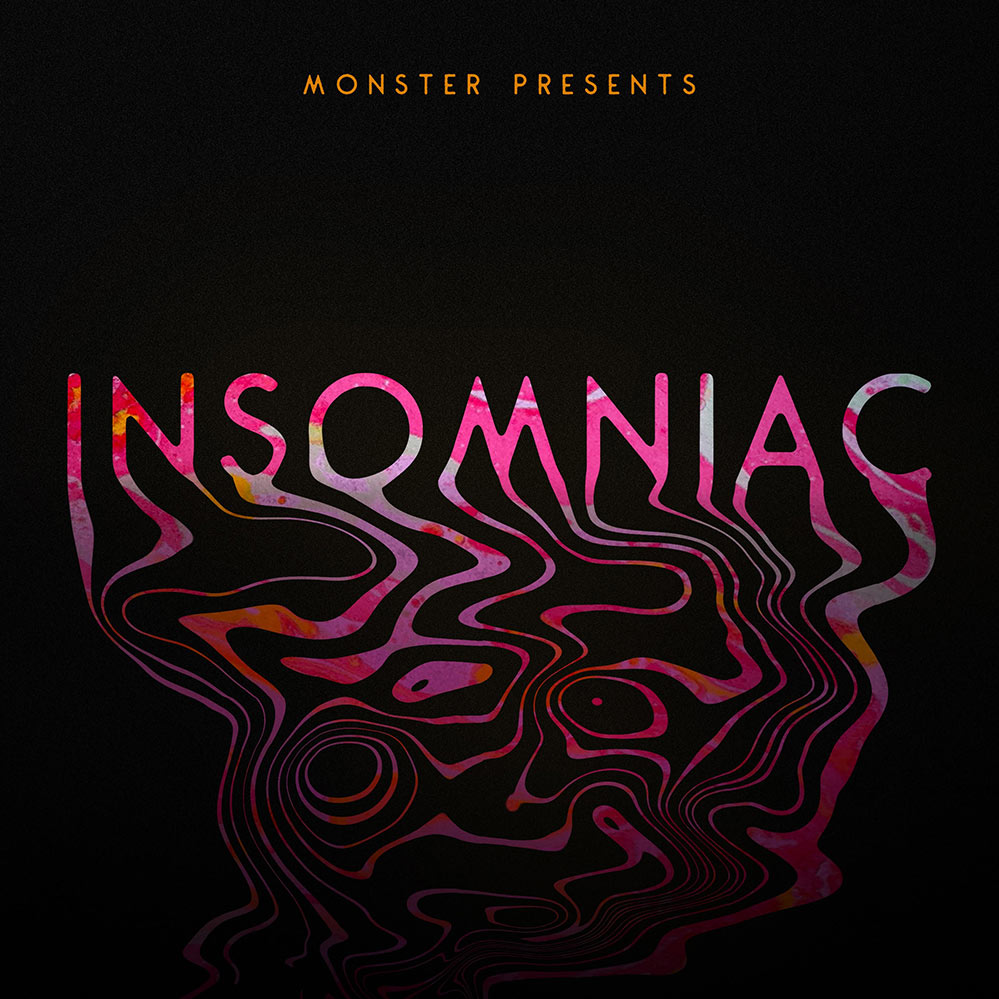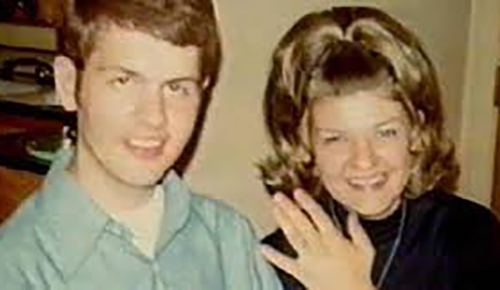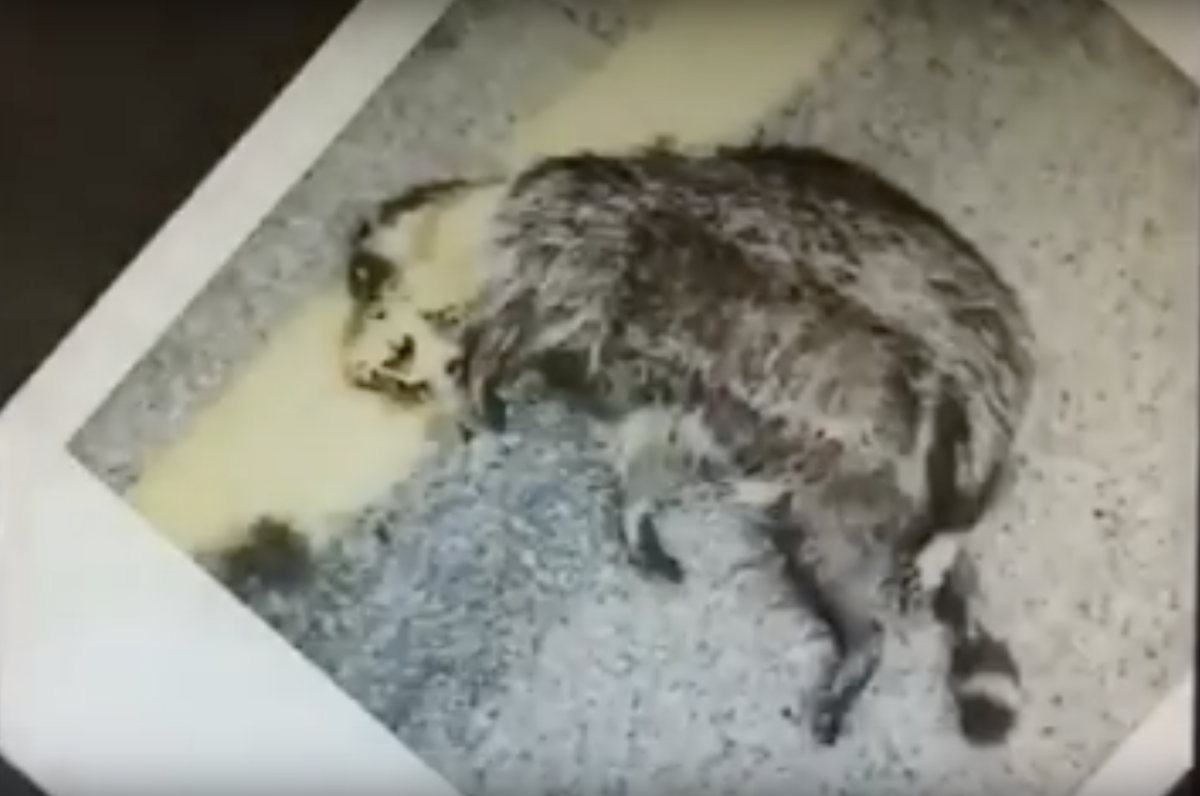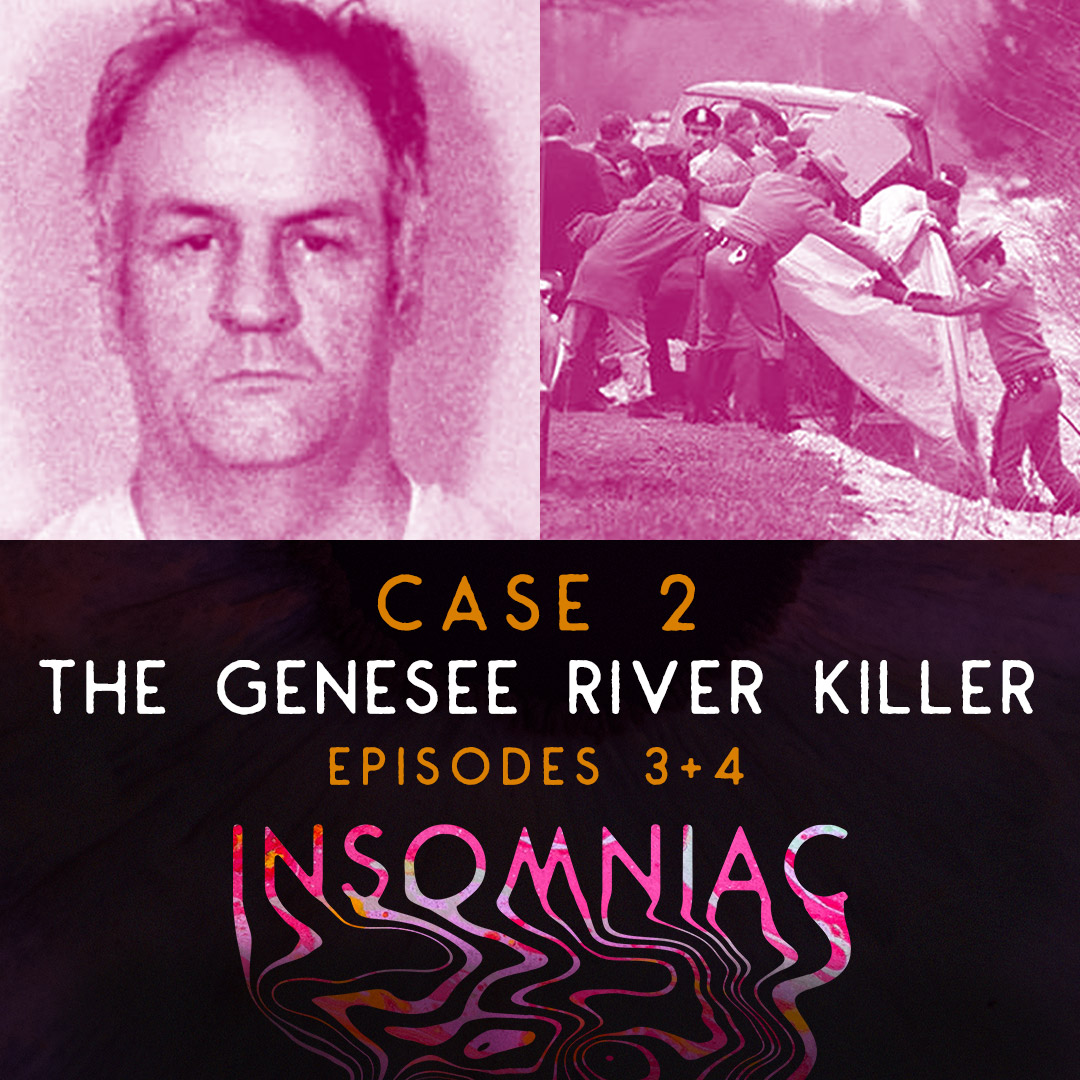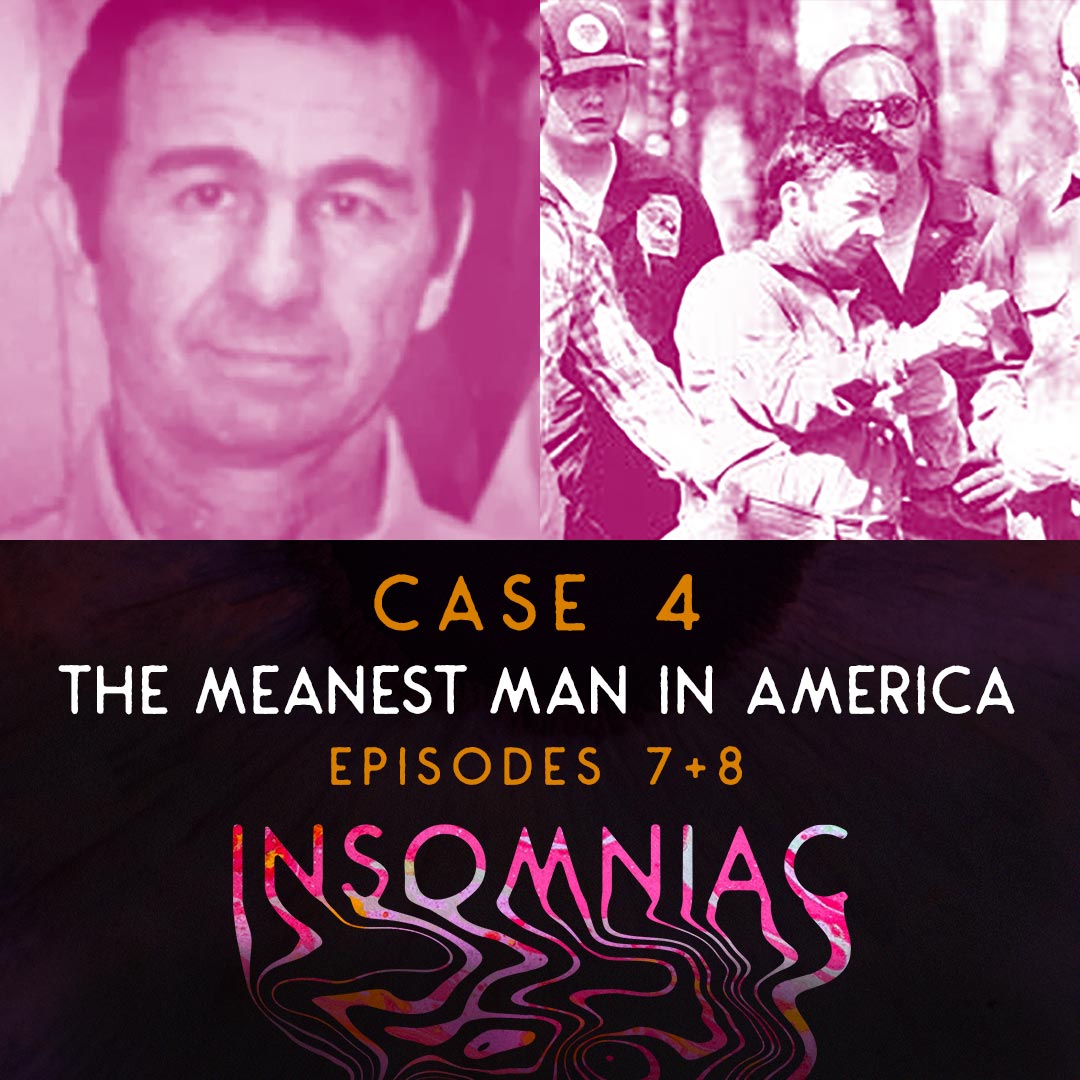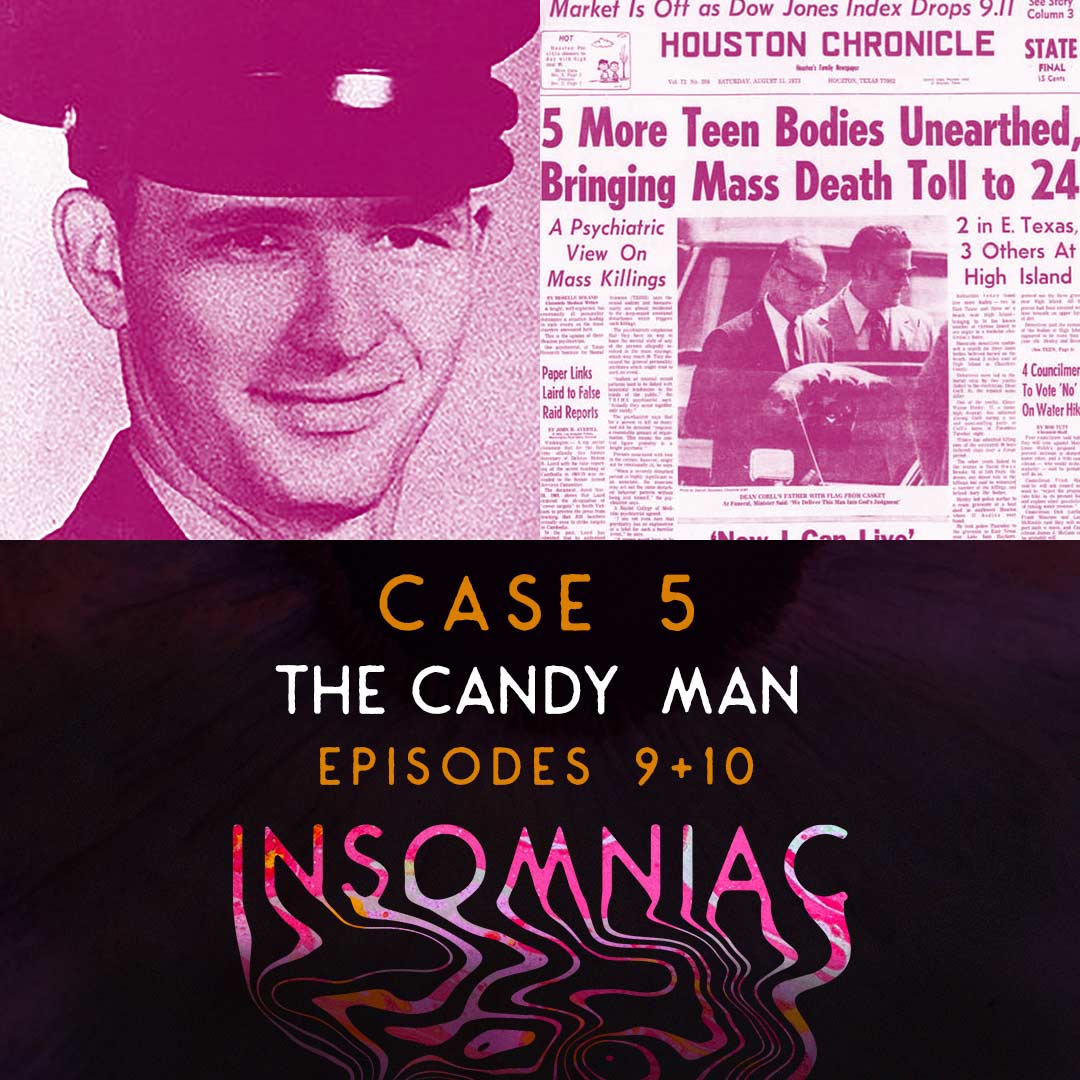case 1
Herb Baumeister
The I-70 Strangler
The I-70 Strangler
Scour the web for the tale of the I-70 Strangler, and the mannequins are always a footnote. You’ll undoubtedly hear about Herb Baumeister’s several murders, or the boys he cultivated then lured home. You’ll find the makeshift graveyard beneath the drainage pipe — just like his neighbor did — where rib cages peeked out from an unkempt lawn. The tale is filled with such horror that it’s easy to overlook the mannequins. And yet they deserve their own story: Baumeister spent days arranging and rearranging these life-size playthings around his pool; building a silent cocktail party — an audience to witness and admire the acts he couldn’t tell anyone about.
Part 1
Part 2
We know plenty about the case, but it’s also clear that some of the dirtiest details went to the grave along with Herb Baumeister. The only witnesses to his brutal and unusual crimes were the mannequins — and they aren’t talking.
Scott Benjamin, Host
The sheriff’s office has no suspects in the deaths of the seven whose bones were found here. But Sgt. Whisman said that Mr. Baumeister, who with his wife owned two thrift stores, was the prime suspect in the disappearances of the young men, some of whom had been missing for more than three years. The bones appear to represent one of the most gruesome acts of serial murder that Indiana has ever seen.
Scott Benjamin, Host
Transcripts
Part 1
Payne Lindsey: The views and opinions expressed in this podcast are solely those of the authors and participants, and do not necessarily represent those of iHeartMedia, Stuff Media, or its employees. Listener discretion is advised.
From iHeartRadio and TenderfootTV, Monster Presents: Insomniac.
Scott Benjamin: I want to let you in on [00:00:30] a dark secret that I’ve tried to hide from nearly everyone for the last few years. Something I’ve only shared with a handful of people until today. And it’s the driving force behind this show. It affects my work. It affects my home life, and to some degree, it’s even changed my physical appearance. I feel like I’m aging a lot faster than I ever have before. [00:01:00] I have nightmares, extremely vivid, realistic nightmares that prevent me from sleeping sometimes for several nights in a row. Not the kind of nightmares that a child might have, but the kind that can only come from the mind of a grown adult that seen a little too much real life horror, read a little too much of the macabre, and someone who’s experienced a lot of recent pain and loss.
I find myself looking at crime scene photos [00:01:30] for hours at a time. I’ve been an avid reader of true crime for decades, and there have been several deaths in my family over the last five years. You might think that’s bad enough, but it gets worse. My dreams are filled with monsters, and sometimes, and these are the worst, the monster in my nightmare is me. It’s strange [00:02:00] and frightening when you envision yourself carrying out some of the most vile crimes you can possibly imagine. But that’s what happens when I close my eyes at night. I really don’t know what’s worse the sensation of committing the crime itself or the endless lies and guilt that result from covering up a crime, disposing of a body. I experience it all.
It’s involuntary of course. [00:02:30] Just a dream I can’t control. I’m certainly not doing anything criminal in real life, nor do I ever want to. But that doesn’t make it any easier for me to accept. You see, these dreams are so realistic that the following morning I’ll spend several hours or even the entire day trying to figure out if last night’s nightmare was real. I even go so far as to avoid eye contact with anyone [00:03:00] certain that I’m guilty of something horrible, and they can somehow read it in my sleep deprived, blood shot eyes.
These are the cases that have kept me awake for the past few years. They’re less known crimes, but that doesn’t make them any less gruesome. I’m hoping that by sharing with you the details of these real life monsters that I can shake some of these demons out of my head long enough [00:03:30] to get some much needed rest.
I’m Scott Benjamin, and everything I’m about to tell you is real.
This is Insomniac.
[00:04:00] On July 2nd, 1996, a Canadian trooper cautiously approached the driver of the vehicle parked under a bridge. The man behind the wheel was asleep, and when asked, he claimed he was a tourist just stopping for some rest. As the trooper talked with the American traveler, she noted that the backseat held some luggage and a large stack of videotapes. However, since there was really no cause for alarm, [00:04:30] the two parted ways. The truth was the tourist had been living out of his car for several days at this point.
The very next day, on July 3rd, 1996, that same American visitor was in Pinery Provincial Park in Grand Bend, Ontario, Canada. The stack of videotapes in the backseat was now nowhere to be found, and next to him was a rambling three page handwritten letter on [00:05:00] yellow note paper stating that his marriage was failing, his business was failing, and he was sorry for messing up the park. After all, he had planned to do this somewhere else. He finished his long note with the line that he simply wanted to eat a peanut butter sandwich, his favorite snack, and then go to sleep. With that, he pulled out a 357 magnum and shot himself in the forehead. [00:05:30] By the time his body was discovered later that evening by some campers, he had been missing for eight days.
What really brought this man 400 miles from his comfortable Midwestern home, and why did he feel the need to end it all so abruptly with a bullet to the brain? Was it really the pressures of a failed marriage and business, or was there something more sinister to the story? As it turns out, [00:06:00] there was a lot more. In fact, the dark truth was only beginning to be unearthed in his hometown of Westfield, Indiana just one day before his death, and people in the small town were already beginning to talk.
Most killers aren’t very open about their murdering ways, and that’s with good reason. [00:06:30] But that presents a problem for the killer. While secrecy is absolutely necessary, a lot of killers find they need to share what they have done. They feel the need to brag and receive recognition they think they deserve for their depraved acts. Of course, that’s dangerous for the killer. Tell the wrong person, and you’ll end up in prison for life or receiving a death sentence. You’re going to learn how the I70 Strangler found a way around this dilemma. [00:07:00] How he found a way to share his terrible secret with an entire group of onlookers, and he knew that none of them would ever report him to the police. How could he be so sure of their loyalty? We’ll answer that question along the way.
To begin our story, we have to start almost exactly 25 years ago, in a city known as the Crossroads of America. Indianapolis, Indiana.
[00:07:30] By the mid-1990s, the Indianapolis Police and the Marion County Sheriff’s Department knew they had a problem. Gay men from the area surrounding Indianapolis, all matching a similar physical description, age, height and weight, were disappearing. 10 had disappeared in the previous two years beginning in the spring of 1993. But the problem wasn’t exactly [00:08:00] new to the authorities either. From 1989 to the mid-1990s, the discarded dead bodies of men were being found in rural areas along the corridor of Interstate 70 between Indianapolis, Indiana and Columbus, Ohio. All of them had been strangled to death.
At the time, the investigators couldn’t piece it all together. There were not witnesses, and there just wasn’t enough usable evidence left behind. [00:08:30] The only known connection was the missing men’s ties to the gay community. A lot of them were taken on their way to or on their way home from Indy’s gay nightclubs, but now in the fall of 1994, things were about to change.
Following a tip from an informant, one that wanted to remain anonymous, the hunt for another man, someone known as Brian Smart [00:09:00] was on. According to the informant, he visit one of Indy’s gay nightclubs, and he saw another man who was overly interested in a missing person’s poster that had been tacked on the club’s wall. The poster featured a photo of the informants friend Roger Goodlet. Goodlet had gone missing in July of 1994. Intrigued and more than a little suspicious of the stranger, the informant introduced himself to the man. [00:09:30] He said his name was Brian Smart, and he was a landscaper from Ohio. The informant tried to get Smart to talk more about the missing Goodlet, but every time he mentioned the missing man, Smart became evasive and changed the subject.
As the night wore on, Smart became emboldened and invited his new friend for a late night swim at the house he said he was temporarily living in. The man noted that Smart was driving a gray Buick with [00:10:00] Ohio license plates. Since the informant wasn’t familiar with the area north of Indianapolis, he didn’t know exactly where the house was located, but he was able to describe where they ended up that evening. It was an area surrounded by big homes, long split rail fences, and horse ranches.
The house they drove to was a large tutor style home, and the pair entered from a side door. He noticed that the interior was crowded [00:10:30] with dust covered furniture and boxes as they made their way through the house. Then down some stairs to the bar and indoor pool area. Smart offered his guest a drink that he had prepared himself, but the informant wisely refused it. Smart then excused himself, and when he returned, he was a lot more talkative than before.
The informant suspected that Smart had just snorted some cocaine. [00:11:00] He knew enough about the drug to notice the telltale behavioral changes it produced.
Soon, Smart brought up the topic of autoerotic asphyxiation. That’s when someone receives pleasure from suffocation or being choked either during intercourse or masturbation, often to the edge of death. Smart asked the informant to strangle him first, and he went along with it. He choked Smart with a pool [00:11:30] hose while he masturbated and passed out. After Smart revived claiming a sexual rush like no other, it was the informant’s turn. It was at this point Smart began choking him with the pool hose, but when it was clear that he wasn’t going to stop, the informant pretended to pass out and Smart released him. When the informant finally opened his eyes, Smart appeared rattled, and he claimed he was scared because [00:12:00] the man had lost consciousness.
The truth was Smart didn’t expect his late night pool guest to wake up at all, and that’s what spooked him. It was apparent that Smart had done this before, and the man said that his hands were strong and confident around his neck as he strangled him to the edge of death. When they had finished their poolside fun, the pair collected [00:12:30] themselves, and Smart drove the man back to Indianapolis where they agreed to meet up again the following week. The informant felt that Smart’s deviant behavior in the pool that evening might explain what happened to his missing friend Roger Goodlet. He called to tell the authorities about a suspicion. However, that following week, at the time and place they agreed to meet, Smart never showed, and for a while, he remained [00:13:00] a ghost.
Oh, and one more creepy detailed shared by the informant about the large house some where north of Indianapolis. There were mannequins all over the place and in different postures, including lounging around the pool area. They were well dressed, almost as if they were attending an upscale pool party. When asked about the mannequins, Smart replied [00:13:30] that the owner of the house didn’t want to be lonely. He kept them around for company.
So why mannequins? What’s the fascination? Well, it’s due to a condition called agalmatophilia, which is the sexual attraction to a statue or a doll or [00:14:00] a mannequin or any other similar figurative object, most often one that has a female form. Those that have this condition are sexualizing a doll. Now the homeowner in today’s case just happens to be sexualizing a group of life-sized dolls. If you know where to look, examples of agalmatophilia can be found in lots of places. It appears in the arts. Hans Bellmer created and photographed life-sized fetish dolls in the 1930s, and [00:14:30] the sexualized doll photography of German arts Helmut Newton is another example. There are instances of this in novels and movies too, and dating much earlier. There’s the Greek myth of Pygmalion, the sculptor who fell in love with the statue he had carved.
If you’re looking for modern examples those are easy to find too. For instance, Ronald Dotson, age 39 at the time, was arrested in the city of Royal Oak, Michigan in [00:15:00] 2007. Police spotted Dotson near a smashed out storefront window that displayed a mannequin wearing a French maid outfit. This arrest came just a week after he was paroled for his sixth breaking and entering conviction over the course of 13 years. Now not all of Dotson’s crimes involved mannequins, but a lot of them did. One notable arrest in his past came after police had found him in an ally behind a woman’s clothing store with three mannequins, [00:15:30] all were dressed in lingerie. This is clearly a man who has a sexual fetish for female mannequins and simply can’t control his urges, even if that means breaking into a business to satisfy his needs.
For his crime in Royal Oak, the judge gave Dotson a harsh sentence, a year and a half in prison. But that’s likely because he was a repeat offender with many prior convictions, and the judge reasoned that Dotson’s [00:16:00] behavior, even though he never really harmed another human, struck fear in the community.
With the information and descriptions provided by the informant, the police staked out the gay bars in Indianapolis, interviewed bar patrons, and posted fliers. But they weren’t able to locate anyone named Brian Smart or anyone who fit the description, [00:16:30] and the killings continued.
Finally, a year later in the fall of 1995, the police got another break. The informant had spotted Brian once again, and this time he got the man’s license plate. The Indianapolis Police ran a check on the license plate number, and the results pointed back to the car’s owner. [00:17:00] Brian Smart was actually Herb Baumeister, a resident of the nearby suburb of Westfield, Indiana.
Herbert Richard Baumeister was born on April 7th, 1947 in Indianapolis, Indiana. He was the eldest child of Herbert and Elizabeth Baumeister, and he led a seemingly happy childhood. But in [00:17:30] adolescents, he started developing antisocial behaviors. There were rumors of him urinating on a teacher’s desk. He started playing with dead animals, and friends remember him speaking of wondering what it would be like to taste human urine. Secretly, Herb’s father had him take psychological tests, tests that indicated Herb was a schizophrenic and that he had multiple personality disorder. The odd [00:18:00] thing is that there’s no record of Herb ever receiving treatment for either condition. By 1965, Herb had graduated high school and was accepted into Indiana University. He dropped out of college after just one semester and went to work as a copy boy for the Indianapolis Star Newspaper but returned to IU in the fall of 1967, and that’s when he met his future wife, Julianna or Julie as she preferred to be called.
[00:18:30] In November of 1971, Herb was 24 years old, and he and Julia were married. In the late 1970s and early 1980s, the two had three children together, two girls and a boy. Marie, Erich, and then Emily. In 1972, not long after his marriage to Julie, Herb spent two months in a psychiatric hospital committed by [00:19:00] his own father. Julia agreed with the decision saying Herb was tired, and he needed help.
By 1974, Herb had taken a job with the Bureau of Motor Vehicles and was eventually promoted to program director. This success didn’t last long however as signs of his mental illness began to show, and his position was finally terminated in the 1980s [00:19:30] when he urinated on a letter which was to be sent to the then governor of Indiana, Robert Orr. The next several years weren’t much better for Herb either. On September 3rd, 1985, Herb now 38 committed a hit and run while intoxicated. But there was no severe punishment. Then less than one year later in March of 1986, Herb was charged with auto theft [00:20:00] and conspiracy to commit theft, but he once again avoided punishment and somehow beat the charges against him. That very same year, Herb’s father died.
On the positive side, Herb had taken a job at a local thrift store that inspired him and his wife Julie to start a business of their own. In 1988, Herb’s mother, Elizabeth Baumeister loan him the money to open his own thrift store. [00:20:30] The Baumeister’s called their new thrift store Save A Lot, not to be confused with the chain of grocery stores that go by a similar name, and it was initially successful. Earning the couple a small fortune in the first year alone. The pair soon opened a second location, and things were beginning to look up for the young family. Herb was a domineering business partner, which Julie didn’t like but tolerated. And the employees [00:21:00] of Save A Lot noticed that Herb would often disappear for several hours at a time right in the middle of the work day, and he always returned smelling like alcohol.
Despite Herb’s questionable management style, by 1991, the small Save A Lot chain was successful enough to allow the Baumeister’s to buy a new home, a much bigger home outside of the city. Somewhere with a lot of property and privacy [00:21:30] where Herb could conduct a different kind of business.
This podcast started out as a deep dive into some of the cases that interested me. I’ve listened to and read so much true crime over the years, I didn’t think this process would be any different but it is. Researching these stories to the fullest extent, studying them every day, and writing [00:22:00] about them is a disturbing process, and I started to lose sleep over it. It all began with my dad and his fascination with these stories of real life crimes. True crime books were always and still are on his Christmas and birthday wish lists, or as my aunt sometimes called them, his murder books. Other members of our family would just laugh and shake their heads and wonder why he was drawn to books about such dark material. But I always understood. [00:22:30] It was a way to be a voyeur into a world that few rarely see. A front row seat to view the thoughts and actions of a killer, their victims, their families, and even the authorities as they worked the other side in an effort to bring them down.
Occasionally, I get my hand on a few borrowed books here and there. Some of my dad’s favorites that he’d allow me to take off his shelf for a few weeks at a time. He always had dog eared pages and some handwritten notes in the margins or on the backside of the cover [00:23:00] as if he was trying to piece the story together himself, to solve the crime before he finished the last chapter. But those old books were enough to get me started and more than enough to show me that fact is almost always more interesting than fiction.
30 years ago, I never dreamed I’d be doing what I am now. That those true crime books would be something much more to me than just a relaxing way to pass the time on a plane or well poolside on vacation. Now reading those books have become part of [00:23:30] my daily work. I know it sounds like a dream to some of you, and I thought it might be too. But I wouldn’t necessarily call it entertaining anymore or fun or relaxing in any way. I suppose that’s what happens when your hobby and your leisure activity becomes your work, your obsession. But it’s not just the endless pages of detailed, horrific crimes that keeps me awake at night. There’s something more.
This obsession has led me down a darker path, [00:24:00] one that I don’t want to be on anymore. Reading true crime is not the escape that it once was for me. In fact, it’s become the opposite, and I just want it to end. The good news is that I do see a way out. I could be wrong, but I feel that if I use this series as a way to talk through this, a way to work out some of these demons, I might be able to get to the other side, and I might end up in a better place. The material we’re going to cover [00:24:30] is going to be dark, and the journey’s going to be difficult. But it’s something I have to do. I have to keep moving forward for now anyway.
While researching this case, I came across something highly unusual, something I never really expected, and fairly rare among the ranks of serial killers similar to Herb. [00:25:00] I found a short video clip that shows what amounts to a chance encounter with a serial killer by a local television station in Indianapolis. The news station was WISH TV Channel 8, and the reporter interviewed Herb Baumeister right at the height of his crimes. There’s no indication in the video as to what year the interview took place, but I have it figured to be between 1991 and 1994. The background of the shot is clearly [00:25:30] Baumeister’s property. There’s no doubt it’s his fields, his driveway, and his fence. In fact, you can match the location with crime scene photos taken of the property years later. We’ll play the audio for you in a moment. But here’s how all of this came to be.
Herb and his son were near the road just outside of the property, and they witnessed a road stripping crew passing by. There also happened to be a dead raccoon on the road. [00:26:00] As the crew approached, Herb said to his son, “I think he’s going to lay a paint stripe right over that dead raccoon.” Sure enough, the crew did just that. Apparently this angered Herb so much that he decided to take photographs of what he witnessed and share them with the local news station to alert them to this wrongdoing. It’s a very strange interview. There’s Herb standing on the edge of his property [00:26:30] wearing a suit and tie and looking exactly how you would imagine a successful small business owner might look in the 1990s. Nothing seems to be out of the ordinary. He’s relatively calm. He’s amiable, and even laughs a bit. But at the same time, he seems appalled at the callous treatment of this dead raccoon. I find this extremely strange.
Listen to his interview and see if you agree.
Newscaster: Herb [00:27:00] Baumeister of Carmel saw it all.
Herb Baumeister: I said to my son, “They’re going to get that raccoon with the spray gun,” and sure enough, they just sprayed right over its face and neck. Didn’t even move it. No effort to get it out of the way. I had my Polaroid with me, so I took a shot of it.
Newscaster: A raccoon which met its demise on the yellow line became one with the paint. The raccoon has since been removed. This is all that’s left.
Herb Baumeister: This was just… Pretty sure a chalk line drawn [00:27:30] around his career by state officials. There was no excuse for that. The poor thing deserved a better fate than that.
Scott Benjamin: “The poor thing deserved a better fate than that.” The question is this, is Herb really that upset about the treatment of a dead raccoon, or is he using this as an opportunity to try to blend in? Trying to appear a little more normal than the way he was perceived by everyone around him. Was he attempting to pretend to be a normal, [00:28:00] functioning member of society? I guess we’ll never know the answer.
The Baumeister family was ready to move into their new dream home. But the cracks were beginning to show and Herb’s secret life couldn’t stay secret for long. Erich, Herb’s son, was about to make a gruesome discovery in the woods. Something that should make Julie question everything she believed about her husband, [00:28:30] but she ignored it.
Next time on Insomniac.
Credits: Insomniac is a production of iHeartRadio and TenderfootTV. Written and hosted by Scott Benjamin and produced by Miranda Hawkins, Alex Williams, Matt Frederick, and Josh Thane. Music composed by Makeup and Vanity Set and covered by Trevor [Eyler 00:28:58]. And a special thanks to Joe Melillo [00:29:00] and WISH TV.
Follow on Twitter and Facebook @InsomniacPod, on Instagram @InsomniacPodcast, and at our website insomniacpodcast.com. For more podcasts from iHeartRadio, visit the iHeartRadio app, Apple Podcast or wherever you listen to your favorite shows.
Part 2
Payne Lindsey: The views and opinions expressed in this podcast are solely those of the authors and participants and do not necessarily represent those of iHeart media, Stuff Media or its employees. Listener discretion is advised. From Iheartradio and Tenderfoot TV, Monster presents INSOMNIAC.
Scott Benjamin: [00:00:30] Herb Baumeister lived a double life as the I70 strangler. During the day, he was a business owner, a husband and a father, but at night he became someone entirely different. He worked for many years as an undiscovered killer, but as life changed after he bought the property known as Fox Hollow Farm, this guy, this killer, well no one could ever know what he was truly up to. My own private life is a little different. Nothing criminal, [00:01:00] but just like him, there are parts of my life I’d like to keep separate including my sleep issues and my vivid, realistic nightmares. I find that I have to consciously switch between two modes, my professional life, where I have to be at least somewhat polished at the office, although I feel that image has been tarnished quite a bit over the past few years due to my sleep issues.
And then there’s my personal life. [00:01:30] Unfortunately, I believe that’s been tarnished for the same reason as well. I’m in a seemingly endless cycle of insomnia and all that comes with it. The anxiety, the lack of energy during the day, falling asleep at my office desk in the middle of the afternoon, trouble concentrating on anything, and then extremely restless sleep when I do drift off in the evenings. [00:02:00] Normally I keep everything to myself. If I’ve been asked to keep quiet about something, I do. That’s why discussing my own issues, especially something as personal as sleeping habits, is difficult for me. Over the course of the season, I’ll tell you all about it and what has done to me on a professional level as well as personally. Lack of sleep, if it lasts long [00:02:30] enough can absolutely wreck you. I’m Scott Benjamin and everything I’m about to tell you is real.
This is Insomniac.
The year was 1991 Herb. Baumeister was 44 years old and he and his wife, Julie’s, small Save-A-Lot chain of thrift stores was successful [00:03:00] enough to allow them to buy a new home, a mansion north of the city. The home the Baumeisters chose was $1 million 18 acre estate in the Indianapolis suburb of Westfield, Indiana. It was called Fox Hollow Farm, and the sprawling property with the nearly 10,000 square foot house, horse stables, [00:03:30] a separate apartment, wooded areas, and even an indoor pool was the family’s dream. It also afforded Herb a lot of privacy, enough to do whatever he wanted whenever he wanted without the fear of being discovered.
Even more privacy came in the summer months when Julie and the kids would go to visit Herb’s mother in northern Indiana. Sometimes [00:04:00] they were gone for weeks at a time, leaving Herb at home alone to watch over the Save-A-Lot stores. By 1994, the family business was suffering a downturn in fortune. The Save-A-Lot stores were no longer successful, and Herb himself was in the midst of another personal crisis. Aside from the business failing, he and Julia were no longer getting along due to his mood swings and erratic behavior. [00:04:30] He was arrested for drinking and driving in Rochester, Indiana, and sentenced to three days in jail in one year of probation. To make matters worse, his son, Eric, found a human skull in the woods surrounding the family home. Eric brought the skull to his mother who then asked him where he had found it.
When they returned to the spot, they found an entire cluster [00:05:00] of bones, a half buried full human skeleton. That evening, Julie confronted Herb about the bones, but he simply told her not to worry. He claimed it was a medical research skeleton that belonged to his now deceased father who was an anesthesiologist.
Surprisingly, Julie had no more questions about the skeleton in the yard. Even [00:05:30] after she realized that it had somehow disappeared just a few days later. “Probably carried away by animals.” She thought to herself. Herb’s entire life seemed to be in a downward spiral and things were only getting worse. His wife, his children, the authorities, and everyone else really, we’re about to learn the secrets that Herb kept hidden at Fox Hollow Farm.
[00:06:00] Herb had a lot of secrets, but people around him were also aware that he had some problems, reports from his coworkers at the Indiana Bureau of Motor Vehicles show that his behavior was more than a little erratic to say the least. He lacked a sense of propriety and his timing and judgment were off. He just didn’t quite know what was socially acceptable. [00:06:30] He had a strange fascination with dead animals. For instance, when he was young and on the way to school one morning he picked up a dead crow, pocketed it, and later placed it on his teacher’s desk when she wasn’t looking.
He also had an unusual fascination with urine. Not only did he pee on his teacher’s desk and discuss drinking urine, but when he peed on the letter to the governor of Indiana, well, that answered the question about who had peed on Herb’s [00:07:00] manager’s desk just a month prior. I think all of this is related to Herb’s untreated condition, his schizophrenia. If you don’t know what schizophrenia is, it’s a long-term mental disorder that can last for years or even a lifetime. There’s a breakdown in the relation between thought and emotion and behavior. This leads to faulty perception, inappropriate feelings and even actions. [00:07:30] Schizophrenics are often drawn into a fantasy or delusional world. There’s a broken sense of reality. Things are mentally fragmented. The good news is that there is treatment, but there’s also no cure.
What I found in my research was that some, but not all serial killers are schizophrenic. A lot of them do, however, have a different mental disorder known as Antisocial Personality Disorder or APD [00:08:00] and personality traits of a psychopath as well, which includes no empathy, the ability to manipulate and intimidate others, but also to do these things with a sort of charm that allows them to get exactly what they want. No matter what it takes. Someone who repeatedly gets away with murder has to be at least somewhat in control of the situation. They have to be very cold, calculating and extremely careful about what they do. [00:08:30] That doesn’t match up with the mixed up confused thoughts and behaviors of someone who is an untreated schizophrenia. Someone like Herb Baumeister.
Authorities knocked on the door of the Baumeister residence in November of 1995 and asked Herb for permission to search his estate. After all, a license [00:09:00] plate search of the Buick with Ohio plates had pointed directly to Herb, and the police were desperate to make any connection that might bring an end to the killings. Herb, of course, refused the search and since the police didn’t have enough evidence for a warrant, they had to leave. Julie also refused the search believing, as her husband had told her, the request was the result of a false accusation of theft.
[00:09:30] They were turned away at the door, but the investigators knew they had an option. They had to get to Julie. She needed to know that her husband was living a secretive double life and he was now suspected of multiple murders. In June of 1996 at the age of 49, Herb’s life was continuing to crumble around him. The authorities were still sniffing around him and Julie, [00:10:00] just waiting for the chance to search the property. Both of his Save-A-Lot stores had now failed and had closed their doors for good. Julie had filed for divorce and Herb was so depressed that he threatened to take his own life, but even all of that wasn’t the worst thing that happened to Herb. In late June of 1996, while on a visit to his mother in northern Indiana, Julie decided that she had enough. She gave the police [00:10:30] permission for a full search of the property while Herb was away.
It didn’t take long. After just a few days, investigators had recovered more than 5,000 bones, bone fragments and teeth that they eventually learned had belonged to four separate victims. The remains were pulled from the wooded area of the property, concealed under piles of fallen leaves and trash. [00:11:00] A neighbor of Baumeister’s prompted a second search of Fox Hollow Farm. He had found skeletal remains near a drainage ditch that separated the two properties. Once again, it didn’t take long.
All right, well, it’s a two o’clock in the morning on Saturday, early Sunday.
Insomnia for me [00:11:30] and many others means my mind is active when I really rather it wasn’t.
And I can’t get to sleep again. I’m just just laying here, can’t seem to shut it down enough. My thoughts, I can’t seem to turn everything off and be able to just get some rest.
I started recording myself and these sleepless moments, a log of my thoughts.
It’s killing me. I’m exhausted, but at the same time, can’t sleep.
My anxieties.
I don’t know what I’m going to do.
My nightmares.
[00:12:00] Rough. I don’t know, just a bad evening, I guess.
I wasn’t sure I’d ever played these again and I definitely didn’t think I’d be sharing them with anyone else.
All right, so I’m going home from work now and it’s about, it’s about five o’clock. Yeah. I just feel like I need to tell somebody this, but I’m pretty sure other people [00:12:30] noticed too, but when I’m at work and it’s the afternoon, like mid-afternoon, I just cannot to keep my eyes open when I’m sitting at my desk. I’m supposed to be working. I’m supposed to be writing. I want to sleep at night. I don’t want to sleep during the middle of the day. It’s embarrassing and I don’t want it to happen anymore. Laying in bed at night with your eyes wide open and then at your desk at the office with your eyes closed and you can’t keep them open. It’s just completely opposite [00:13:00] of the way it’s supposed to be, it’s completely flip flopped, and I don’t know how to fix this, but I’ve got to pretty soon.
To some extent, everyone has a double life. Those clips you just heard are the part of my life I don’t normally share with anyone. The people I surround myself with, my friends and family don’t really know much about this side of me. Not that I’m keeping anything criminal from them, but my insomnia makes me a different person [00:13:30] altogether. Unlike these criminals, I can share this with you, but these killers couldn’t allow anyone to know what they were up to. They had to have the secret side. When they were caught, that second life always came crashing down around them in a heap. Leaving them exposed for the monsters they were underneath. I’m just thankful that my own secret isn’t going to lead to a complete collapse of my life. At least I hope not, [00:14:00] but until I get it all figured out, it feels like it’s killing me.
I want to be very careful when approaching this topic and I want to be very clear when I say that Julie Baumeister is not responsible in any way for the actions of her husband. But I would like to know the real answer to the question. How much did Julie know and when? [00:14:30] It’s a question I always have regarding the spouses of serial killers, how is it possible that they don’t know their partner is guilty of murdering people outside and sometimes even inside their own home? Right from the beginning, Julie has claimed that the Herb Baumeister, we know the serial killer is not the same Herb Baumeister that she was married to. What she means by that is she saw him as a devoted, if often absent husband, a good father [00:15:00] to their three children and a successful provider for the family. She knew he was flawed, far from perfect. Of course, but definitely not a serial murderer. Even so, it really does make you wonder how she ignored so many signs that Herb was not necessarily the man she thought he was.
At one point, Julie admitted that she and Herb only had sex six times in their entire 25 year marriage. [00:15:30] The summer week she spent away from home didn’t help matters either. She wasn’t able to see Herb’s day-to-day activities and it gave him plenty of freedom to use the house, and in particular the indoor pool, any way he wanted. This also left him completely free to cruise the Indianapolis gay nightclubs in the evenings looking for sex partners and potential victims. Julie claimed she had no idea that Herb was interested in men. All of this is really just [00:16:00] the tip of the iceberg.
Herb’s double life held a lot of secrets. But the one point that stands out among the rest, the one bit of information, it’s the hardest for most people to swallow, is that Julie ignored it when her son handed her a human skull and then led her to a full skeleton half buried in her yard. Yet, she did nothing. It’s difficult, but try to imagine yourself [00:16:30] in that position. Human remains in your own backyard are hard to overlook. But that’s exactly what Julie did. And soon after when the authorities were knocking on her door and asking to search the property, she refused because Herb told her another lie. All the while she knew that someone was buried in the woods behind the house.
So how much did Julie Baumeister know and when did she know it? [00:17:00] Did she really know nothing until the authorities took her aside and told her that her husband was the prime suspect in what they called at the time multiple homosexual homicides? That’s what she’s always claimed, and that’s what we have to believe until we hear otherwise.
The authorities were now conducting a second search at Fox Hollow Farm, [00:17:30] this time in a ditch that separated the Baumeister’s property from their neighbors. After finding the scattered remains of at least four separate victims, including bones, bone fragments, and teeth. The investigators felt certain that a search of a ditch on the Baumeister’s property would yield additional grizzly results, and they were right. The authorities immediately found human bones in and around the ditch. Lots of them.
[00:18:00] Intact rib cages and spines were poking out from the muddy ground. Every shovel full of dirt seemed to bring more and more bones to the surface. Along with the skeletal remains, investigators unearthed handcuffs, no doubt used on the victims, and several cans of Miller Genuine Draft, Herb’s favorite drink. By the end of the second search, this area alone had produced the remains of seven additional [00:18:30] victims. In total, Fox Hollow Farm concealed the bodies of 11 men, yet only eight of them were ever positively identified.
In addition to the 11 bodies found on his property, Herb was also suspected in at least nine other killings along the I70 corridor between Indiana and Ohio. Killings that all occurred in Herb’s early active years and then abruptly ended when he [00:19:00] bought his home and Fox Hollow Farm. All had been strangled, all fit the profile of his other kills, and all were dumped on the roadside in rural areas. According to Julie, Herb had made countless trips to Ohio during those years, supposedly on store business.
Do you remember that stack of videotapes the Canadian troopers saw in Herb’s backseat the day before he killed himself? Well, based [00:19:30] on the location of a semi-hidden video camera found during the sweep of the house, those were likely videos of the murders he committed in the pool at Fox Hollow Farm. We’ll never know for sure of course, because the tapes were never found. One common theory is that Herb tossed him in a river or lake before he pulled the trigger, and because he took his own life, Herb Baumeister [00:20:00] was never arrested for his crimes, never went to trial, and he never confessed to a single murder, not even in the rambling suicide note found near his body.
The story of Herb Baumeister and Fox Hollow Farm is bizarre in so many ways. One that will forever have some amount of mystery attached. We know plenty about the case, but it’s also clear [00:20:30] that some of the dirtiest details went to the grave along with Herb Baumeister. The only witnesses to his brutal and unusual crimes were the mannequins, and they aren’t talking.
In 1987 in upstate New York, a convicted [00:21:00] killer was paroled early after he was deemed no longer dangerous to society. They were wrong. He was a pathological liar, a pedophile, a manipulator, and a serial killer, with a second chance he intended to take. Next time on Insomniac.
Credits: [00:21:30] Insomniac is a production of iHeart Radio and Tenderfoot TV written and hosted by Scott Benjamin and produced by Miranda Hawkins, Alex Williams, Matt Frederick and Josh Thane. Music composed by Makeup and Vanity Set, and cover art by Trevor Eiler. Follow on Twitter and Facebook at Insomniacpod, on Instagram at InsomniacPodcast and on our website, InsomniacPodcast.com. For more podcasts from [00:22:00] iHeart Radio, visit the iHeart Radio app, Apple podcasts, or wherever you listen to your favorite shows.
More Episodes, More Cases
Case 2 | Part 1
The Genesee River Killer
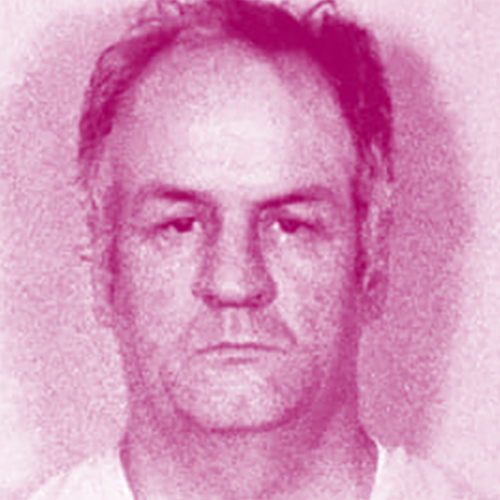
Case 2 | Part 2
The Genesee River Killer
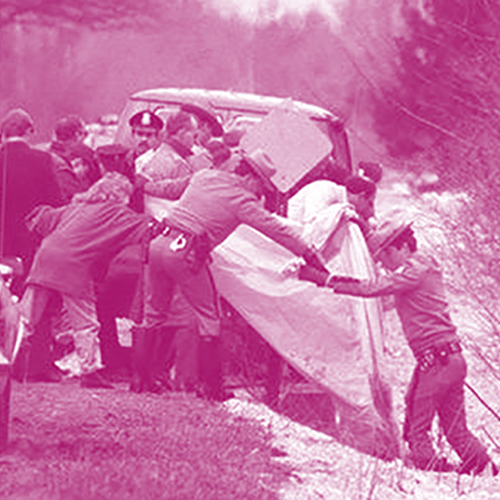
Case 3 | Part 1
The Creepy Neighbor
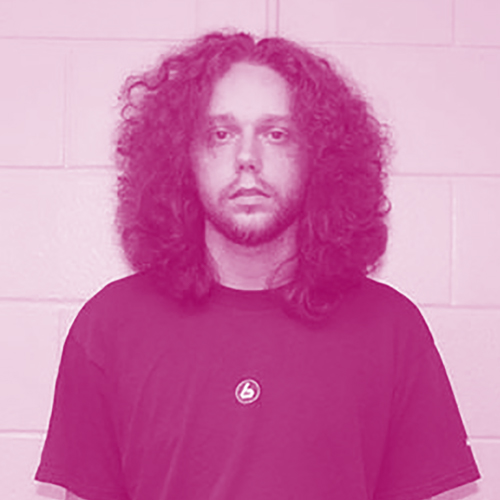
Case 3 | Part 2
The Creepy Neighbor


